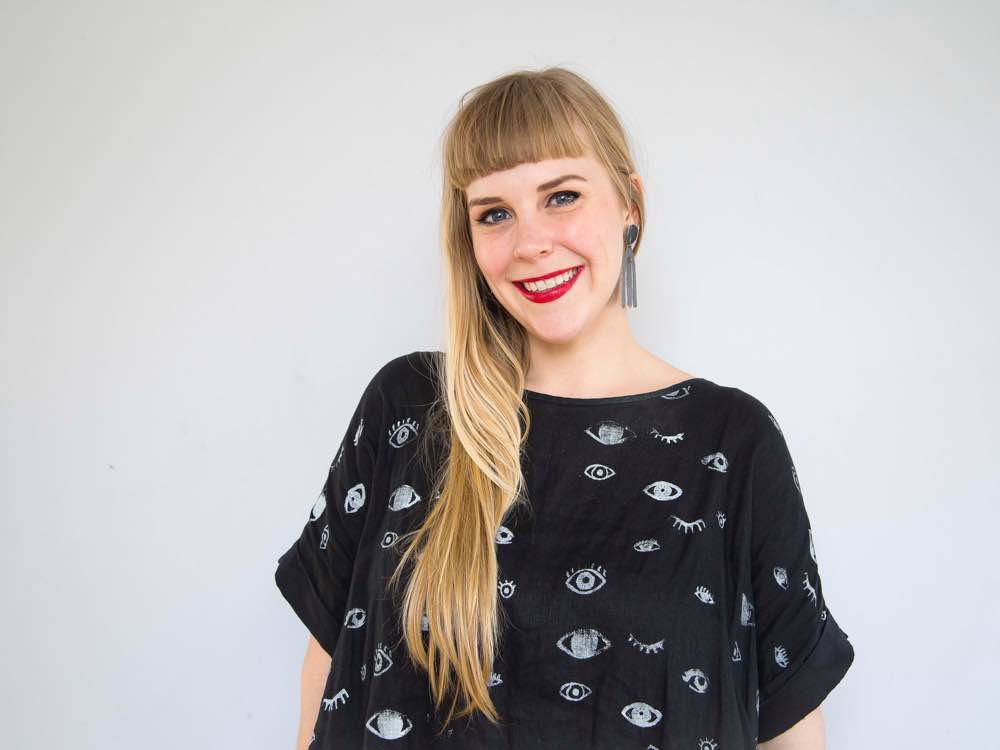Over the past decade or so, a unique aesthetic has emerged from the small retail shops of cities like LA, Portland, Brooklyn, and San Francisco. There’s a certain through line to them that I find comforting: sunny, carefree, and authentic. It’s like a group of kids at summer camp got really good at arts and crafts and opened up tiny stores across the country.
The truth is, this probably isn’t that far off. The “maker movement” can trace its roots back to folk traditions still practiced in some parts of the country, and the whole notion of making things at camp is smack dab in the middle of that whole vibe. And while, like any good thing, we might be getting close to overdoing this “look,” I still stand behind it as it’s emblematic of independent, creative people making neat stuff.
One of those people is Jennie Lennick, owner of the San Francisco small-batch clothing company Jenny Lemons. What started as an art project in 2014 has since turned into a wholesale and retail clothing operation, complete with a brick-and-mortar location in San Francisco’s Mission District.

Lennick got her start making apparel as a kid growing up in rural Minnesota, where she learned to sew, bake, and embroider at a young age. She later went to the San Francisco Art Institute and honed her craft further. Today, her clothing features hand-drawn, printed, or sewed imagery that often depicts the natural food of Northern California of which she’s quite fond.
Though Lennick’s goods are exactly the type of stuff I was talking about earlier, in order to run a successful business, you can’t approach your sales like a 7th grader with a Radio Flyer full of popsicle-stick God’s Eyes. Rather, you need to be savvy and smart about getting your stuff to sell, something Lennick has learned to do over the past few years while maintaining the je ne sais quoi of a homemade, down-to-earth operation.
A Secret Formula
Behind the lightheartedness of Lennick’s brand is a thoroughly mapped business plan that she uses to optimize her production and sales.
“I have a serious formula that I use to price my goods and services. I use a spreadsheet and it’s all very thought-out,” she says. “I figure out the price of all the supplies that go into the product, factor in our operating expenses, labor, and how many pieces we can sell a month. I plug those numbers in my formula and adjust the final price based on market research.”
As far as formulas go, it’s good to work something out that fits your own needs, but then stick to it in order to be able to predict costs, budgets, and profits. (Hey, you might even consider opening an account with Seed in order to more easily keep track of all your transactions.)
Lennick also does a good bit of wholesale business and her products are featured in boutiques across the country.
“My wholesale prices are half of my retail. I make sure my wholesale prices include a mark-up so we make a profit on sales. My minimums are pretty standard — do a $200 opening order,” she says.
Some Not-So-Secret Words of Wisdom
Of course, it takes more than just a good formula to turn a profit. There are also some common-sense (but easily overlooked) practices Lennick employs in order to keep her operation in the black.
“Price fairly,” she says. “Make sure your prices are within the realm of others like you. If your price needs to be higher, make sure your customers know why your product is so special.” Many people don’t mind paying extra for something made by a local artist. They just want to know why they’re shelling out the extra cash.
Lennick also feels that email marketing is the most effective form of outreach, and that she’s seen good returns on sending out periodic flash sales. These sales don’t have to be massive discounts, either. Sometimes a simple 10 percent savings can be enough to get people to click through and buy something they think is cool.
Finally, Lennick believes in the power of great content. “Create content that is enticing to your followers and fans. I take great care in my social media feeds — mainly Instagram — to portray my business as a friendly and honestly company,” she says. “Over the years, I have learned that my customers really like my personal approach and feel invested in the story of my business.”
























































































































































